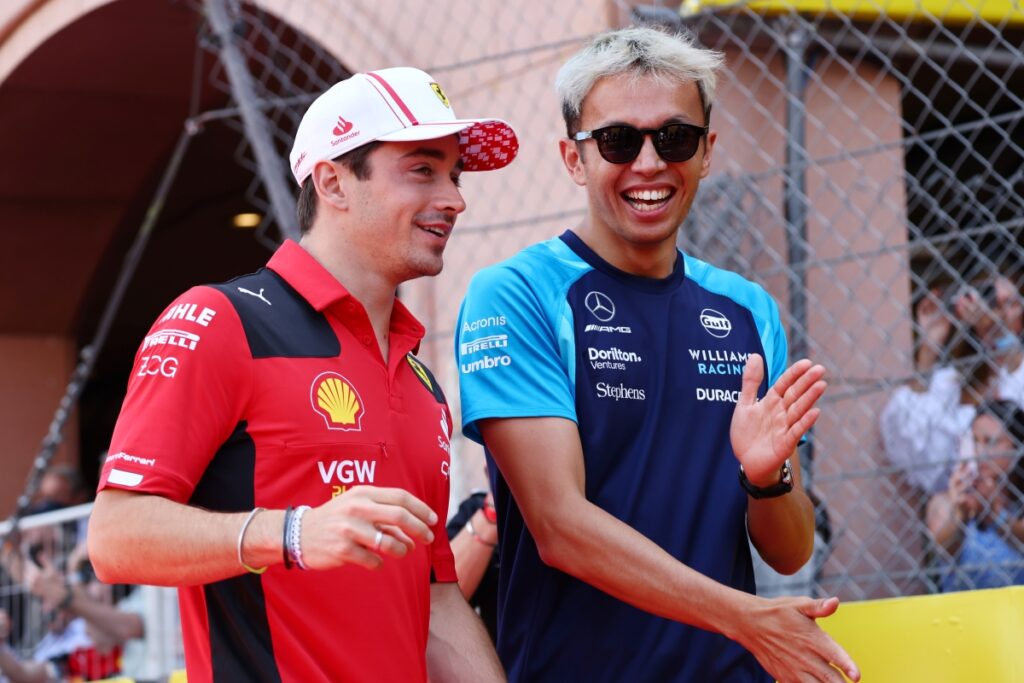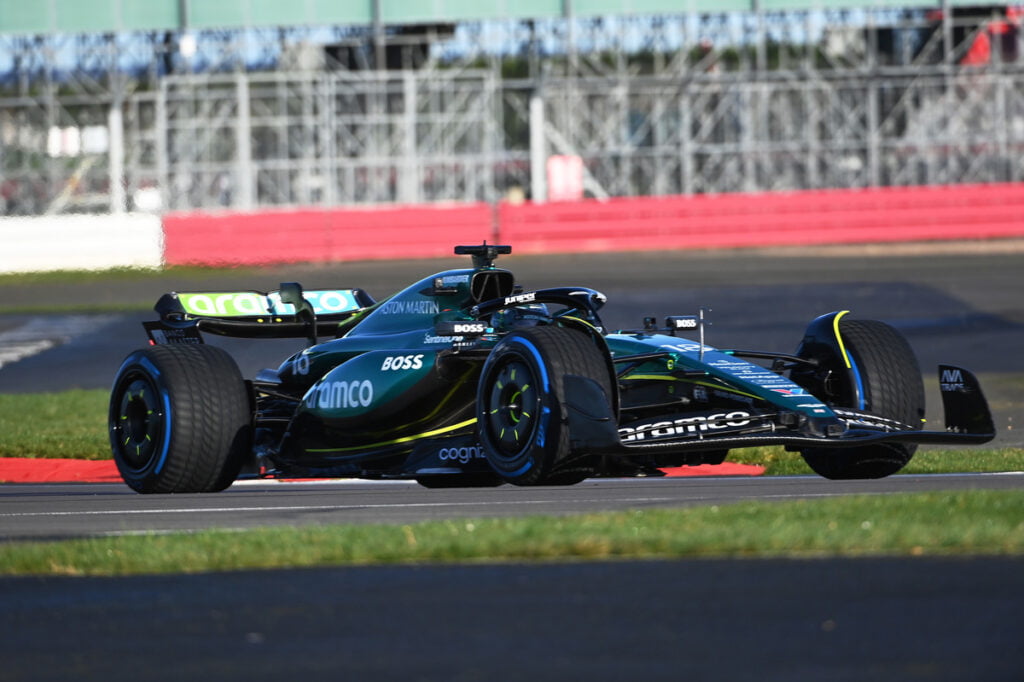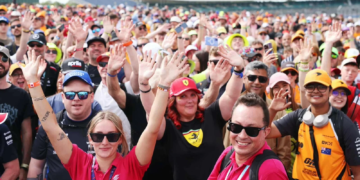Formula 1 and Formula 2 are the top open-wheel racing categories in motorsport today. While they share some similarities, key differences set these two formulas apart. Let’s explain what sets these two categories apart and how each contributes in their own right to the thrilling world of motorsport.
Formula 1 and Formula 2 car differences
Formula 1 and Formula 2 cars may look alike at first glance, but under the bodywork, they are quite different machines. F1 represents the pinnacle of motorsports technology while F2 serves as the main feeder series and training ground for up-and-coming drivers.
Build
The build of the Formula 2 car contrasts significantly. Formula 1 cars utilize a carbon fibre composite monocoque chassis for maximum stiffness and strength while minimizing weight. The bodywork makes extensive use of carbon fibre as well for its high strength-to-weight ratio. Formula 2 cars have an aluminium honeycomb chassis. It is lighter and less expensive than carbon fibre but it lacks the structural rigidity of an F1 chassis.
| Characteristic | Formula 1 | Formula 2 |
| Build | Carbon fibre monocoque chassis | Aluminium honeycomb chassis |
| Engines | 1.6 litre V6 hybrid turbo | 3.4 litre V6 turbo charged |
| Top Speed | Around 230 mph | Around 210 mph |
| Weight | 1,600 lbs with driver | 1,950 lbs with driver |
| Cost | $10+ million per car | $700,000 per car |
Engines
The power plants are vastly different between the two formulas as well. Formula 1 uses a complex 1.6 litre turbocharged V6 engine with sophisticated Energy Recovery Systems (ERS), generating over 1,000 horsepower. The power delivery is very smooth and that’s what makes it drivable, with abundant torque across the RPM range. By contrast, Formula 2 cars use a 3.4 litre V6 turbo charged engine producing around 620 horsepower. While still a high performance race engine, it offers a more peaky power band than the high-tech F1 hybrid power units.
Top speed
The performance differential is not immediately obvious when looking at top speeds. Formula1 cars can achieve over 230 mph, aided by superior aerodynamics and over 50% more power while a Formula 2 car’s maximum speed tops out at around 210 mph. Either way, both formulas are incredibly quick in their own right.

Weight
Racing through classic corners like Eau Rouge at Spa Francorchamps Formula 1 cars are designed to be lighter and nimbler machines. F1 cars weigh around 1,600 lbs, including the driver, which is achieved through extensive use of carbon fibre and high-tech lightweight components. Formula 2 cars, instead, are somewhat more portly in comparison, coming in around 1,950 lbs with a driver aboard. The difference of being 350 lbs heavier and having 380 less horse power is significant in more ways than one.
Cost
Lastly, the costs involved in Formula 1 versus Formula 2 separate them by an order of magnitude. Given the cutting-edge research and development required, Formula 1 cars demand build budgets exceeding $10 million for each car to remain competitive. A season’s budget can easily exceed $150 million for an F1 team and that’s without major costs like marketing or even the drivers’ salaries included. Formula 2 cars meanwhile cost around $700,000 to build and an F2 team will spend around $5 to $7 million per season to run both cars, all in. The budget differences are vast and there is little to no corralation between the two formula’s operating costs.
Formula 1 and Formula 2 weekend format
In addition to the cars themselves, there are differences in how a Formula 1 and Formula 2 race weekend unfolds. While the schedules are not identical, they are coordinated. Support races like F2 always run before the F1 events.
Track length
Formula1 circuits usually between four to six kilometres in length while a legendary track like Spa stretches beyond 7 kilometres; Formula 2 races on the same tracks as F1.
Points system
The points system also differs between F1 and F2. In Formula1, points are awarded to the top 10 finishers, with 25 points for a win down to 1 point for 10th. Places outside the top 10 go unrewarded. By contrast, Formula 2 has two races every race weekend called a Sprint and a Feature Race. While the Feature Race immediately before a Formula 1 grand prix uses the same points system as F1, the Sprint Race has a reverse grid (for the top 10 qualifiers) and uses a system that only awards points to the top eight finishing positions with the winner getting only 10 points, albeit for a shorter race.
Formula 1 and Formula 2 drivers
Just as the different cars set Formula 1 and Formula 2 apart, so do their drivers. The talent level, experience and path to the top levels differ greatly.
Formula1 attracts the 20 best open-wheel drivers in the world today. They tend to be in their mid-20s to early 30s, bringing years of junior racing experience in competitive lower formulas like Formula 2. An F1 grid combines race-winning veterans with young prodigies just breaking through. It is the pinnacle series everyone in motorsport strives for.
The Formula 2 driver roster is predictably younger and less seasoned. As Formula 1’s primary feeder category, these drivers are still honing their race craft to hopefully impress any of the F1 team bosses. Their age tends to range from their late teens into their early-20s. Driving an F2 car already demands skill, but racing wheel-to-wheel against other hungry prospects brings a different kind of pressure.
How do drivers move from Formula 2 to Formula 1?
The FIA Formula 2 Championship is the final step before graduating to Formula and success in the ultra-competitive series catches the eye of F1 team principals.

Finishing higher up in the Formula 2 Championship, or winning Feature races, proves tat a driver has the talent to handle an Formula 1 car. Good F2 drives usually lead to F1 reserve driver roles and test opportunities. From there, it comes to having or finding the sponsorship funding to purchase an F1 seat, usually with a backmarker team.
The most outstanding Formula 2 talents can even skip directly into competitive seats in mid-pack F1 teams. Charles Leclerc, for example, won the F2 title in 2017 and was racing for Sauber F1 the very next year. Carlin’s team boss later described his promotion to Ferrari after just one year with Sauber as “almost unprecedented how quickly it’s happened.”
Key Attributes of Formula 1 vs Formula 2
Digging deeper into this aspect, we can break down some of the key differences that set Formula 1 and Formula 2 cars apart from one another.
Aerodynamics
Formula1 teams currently spend enormous resources researching advanced aerodynamics using Computer Fluid Dynamics and old fashioned wind tunnels. Front and rear wings, barge boards, side-pods, diffusers and more generate as much downforce as possible while reducing drag. The best F1 cars currently achieve over 5Gs of cornering force with enough downforce to drive the cars upside down. Formula 2 cars utilize much simpler aero packages, with around 2.5Gs of maximum cornering force. While wing profiles are similarly efficient, F1 air flows are more effective and efficient around and through the entire car.
Gearboxes
The transmission is another separation point for these cars. Formula 1 transmissions utilise seamless shift gearboxes for lightning-quick shifts without interrupting power delivery. Formula 2, however, uses more a conventional sequential transmission that momentarily cuts power between shifts. Shifting accuracy and speed are, therefore, critical in both series.
Brakes
Given the extreme straight-line speeds, both formulas rely on carbon and carbon ceramic brakes for repeated heavy braking. However, Formula 1 brakes are unusually large to cope with higher speeds and downforce loads. Top teams like Mercedes also incorporate creative rear-axle cooling systems and imaginative brake ducts for improved braking endurance.
Electronics
Traction control and driving aids are both prohibited in both formulas, putting the driver’ talent on full display. However, Formula1 steering wheels feature sophisticated multi-function displays and controls. Engine mapping settings for the hybrid power unit, fuel loads, brake balance (front to rear), differential rations, and suspension stiifness can all be tweaked mid-race. Formula 2 steering wheels, meanwhile, have basic toggles for pit speed limiters and various fuel mixes.

Hybrid power
Formula 1 broke new ground in 2014 by introducing turbocharged 1.6 litre V6 engines mated to motor generator units that recover waste heat and kinetic energy. Collectively generating over 1,000 horsepower with the Energy Recovery System, these power units showcase hybrid tech that will eventually filter down to road cars. Formula 2 cars, however, use relatively simple but high-revving turbo charged V6 engines, following a traditional race engine ethos.
Bottom line
While Formula 1 and Formula 2 have their similarities as open-wheel racing categories, F1 represents the pinnacle in terms of technology, spending and racing talent. F2 serves a crucial role as a feeder series and training ground for the next generation of F1 drivers. Understanding these key differences provides a greater appreciation of what makes each formula so unique. Both play an important role in advancing motorsports.









